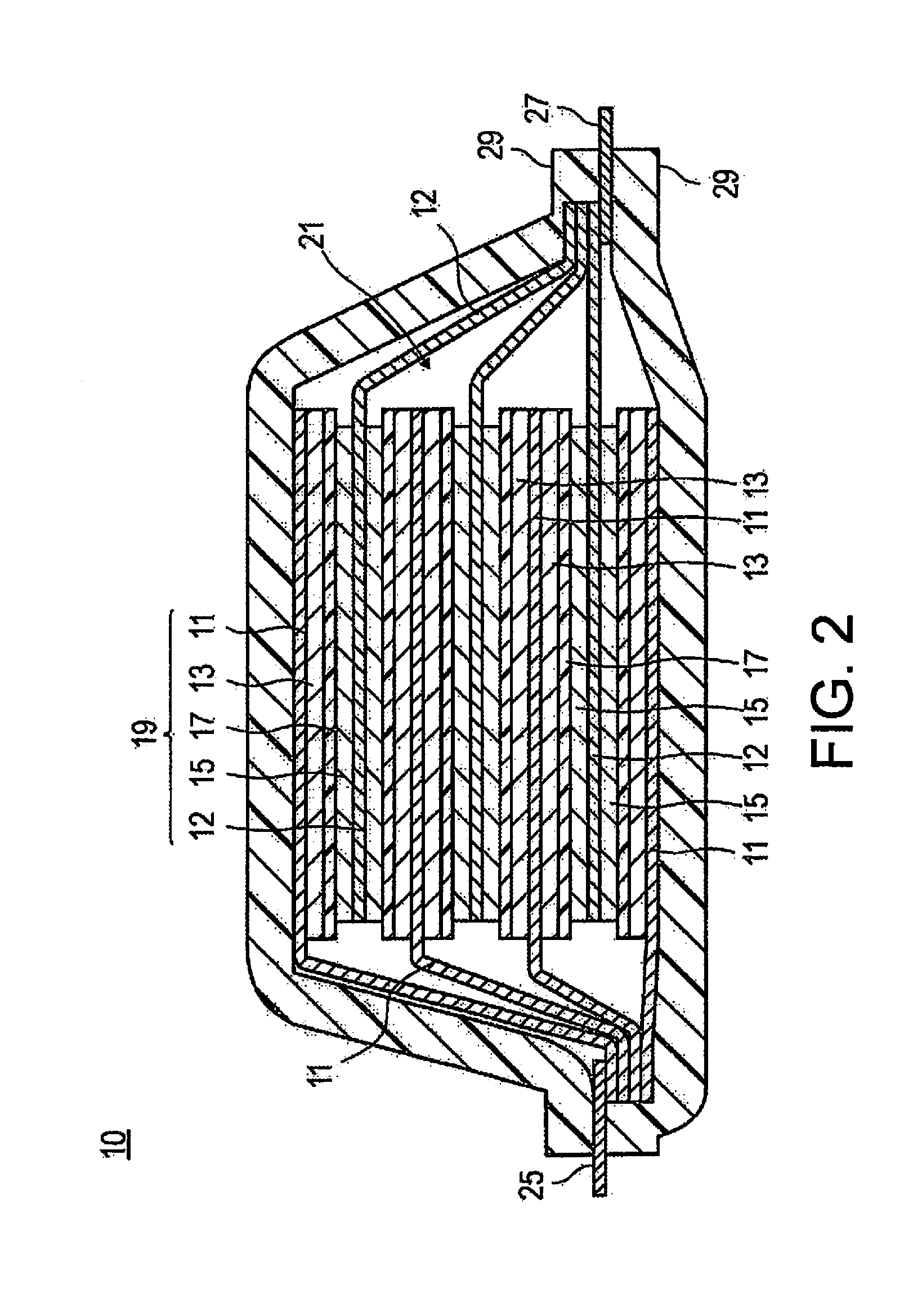Method for producing lithium ion secondary battery
- Summary
- Abstract
- Description
- Claims
- Application Information
AI Technical Summary
Benefits of technology
Problems solved by technology
Method used
Image
Examples
example 1
[0102]In Example 1, the lithium ion secondary battery prepared above was activated by the first activation method according to the following charge-discharge steps.
[0103](Step 1) The battery was charged to 4.45V by the constant current method (equivalent to current density: 0.1 C) under a 30° C. atmosphere, paused for 10 minutes, then discharged to 2V by the constant current method (equivalent to current density: 0.02 C). This cycle was repeated twice.
[0104](Step 2) Next, the battery was charged to 4.55V by the constant current method (equivalent to current density: 0.1 C), paused for 10 minutes, then discharged to 2V by the constant current method (equivalent to current density: 0.02 C).
[0105](Step 3) Next, the battery was charged to 4.65V by the constant current method (equivalent to current density: 0.1 C), paused for 10 minutes, then discharged to 2V by the constant current method (equivalent to current density: 0.02 C).
[0106](Step 4) Finally, the battery was charged to 4.75V by...
example 2
[0107]In Example 2, the lithium ion secondary battery prepared above was activated by the second activation method according to the following charge-discharge steps.
[0108](Step 1) The battery was charged to 4.45V by the constant current method (equivalent to current density: 0.1 C) under a 30° C. atmosphere, paused for 10 minutes, then discharged to 2V by the constant current method (equivalent to current density: 0.1 C). The battery was allowed to stand idle for one hour thereafter, then discharged to 2V by the constant current method (equivalent to current density: 0.01 C). This cycle was repeated twice.
[0109](Step 2) Next, the battery was charged to 4.55V by the constant current method (equivalent to current density: 0.1 C), paused for 10 minutes, then discharged to 2V by the constant current method (equivalent to current density: 0.1 C). After one hour of pause, the battery was discharged to 2V by the constant current method (equivalent to current density: 0.01 C).
[0110](Step 3)...
example 3
[0112]In Example 3, the lithium ion secondary battery prepared above was activated by the first activation method according to the following charge-discharge steps.
[0113](Step 1) The battery was charged to 4.45V by the constant current method (equivalent to current density: 0.1 C) under a 30° C. atmosphere, paused for 10 minutes, then discharged to 3.4V by the constant current method (equivalent to current density: 0.1 C). Then, the battery was further discharged to 2V by the constant current method (equivalent to current density: 0.01 C). This cycle was repeated twice.
[0114](Step 2) Next, the battery was charged to 4.55V by the constant current method (equivalent to current density: 0.1 C), paused for 10 minutes, then discharged to 3.4V by the constant current method (equivalent to current density: 0.1 C). Then, the battery was further discharged to 2V by the constant current method (equivalent to current density: 0.01 C).
[0115](Step 3) Next, the battery was charged to 4.65V by the...
PUM
 Login to View More
Login to View More Abstract
Description
Claims
Application Information
 Login to View More
Login to View More - R&D
- Intellectual Property
- Life Sciences
- Materials
- Tech Scout
- Unparalleled Data Quality
- Higher Quality Content
- 60% Fewer Hallucinations
Browse by: Latest US Patents, China's latest patents, Technical Efficacy Thesaurus, Application Domain, Technology Topic, Popular Technical Reports.
© 2025 PatSnap. All rights reserved.Legal|Privacy policy|Modern Slavery Act Transparency Statement|Sitemap|About US| Contact US: help@patsnap.com



